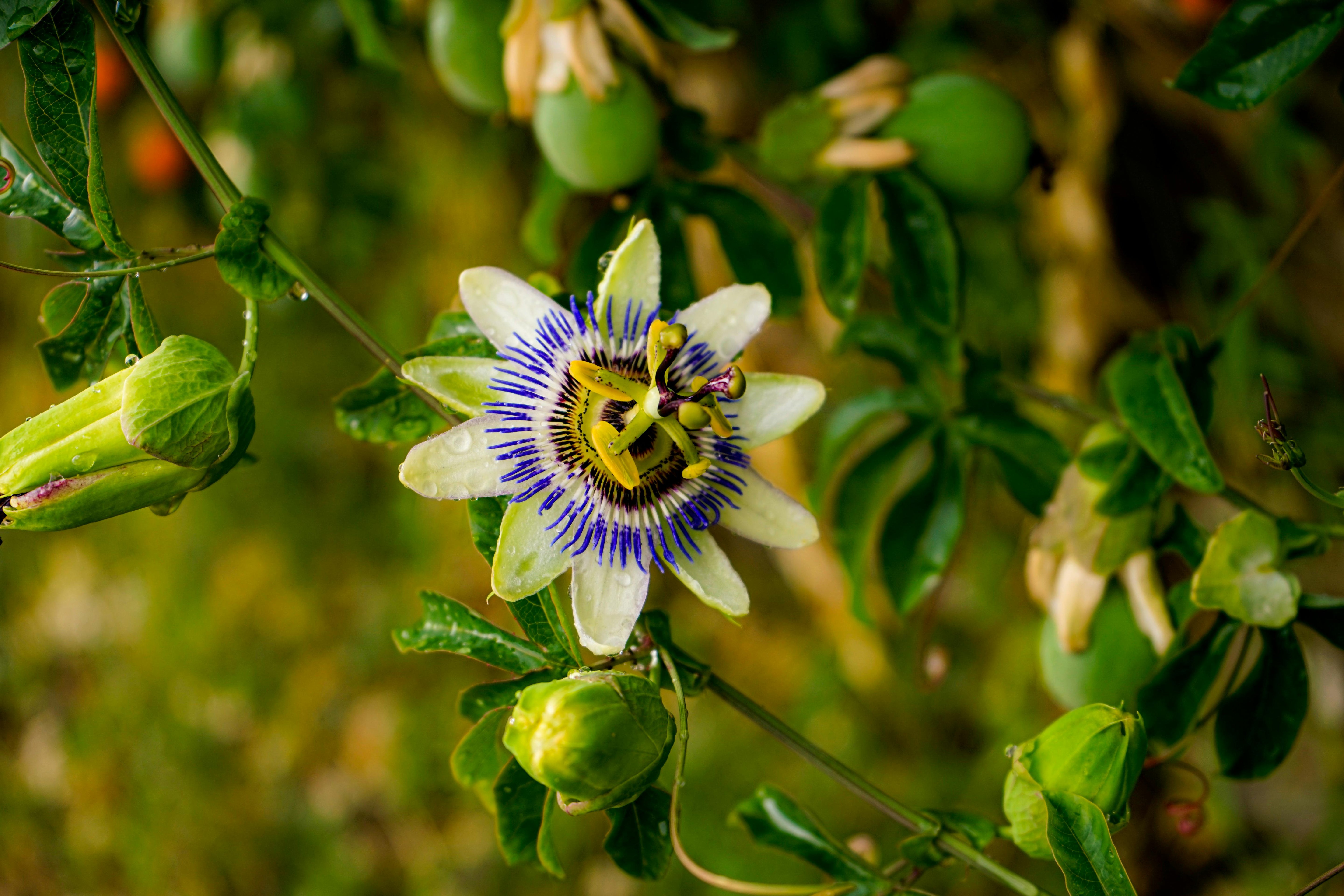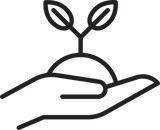Herbs for kids is a topic that often raises some eyebrows.
Many parents are understandably cautious—after all, the idea of using herbs can feel a bit daunting, especially when it comes to children. However, I’m happy to reassure you that the list of safe and beneficial herbs for kids is far longer than you might think. With the correct dosages and proper guidance, most herbs are perfectly safe for children, with just a few exceptions. As always, if you have any concerns or doubts, it’s best to consult with an experienced herbalist or healthcare practitioner. This blog aims to provide general education and guidelines, but ultimately, the most crucial factor is your assessment of your child’s unique needs and circumstances.
Finding The Right Dosage
When giving herbs to kids, the key to doing it safely is all about dosage. If you grab any herbal product off the shelf, the dosage is usually based on a 150-pound adult (which doesn’t help when you’re dosing a 30-pound kid). The good news is that most herbs are safe for kids when given the correct dose, and many herbal products explicitly designed for kids come with dosages that are already adjusted for different ages and weights, making life a whole lot easier. But if you’re in a pinch and only have that tea or glycerite you’ve been using, don’t worry! There are several ways to determine the correct dosage based on your child’s weight or age. I’ve got two methods I like to use, though several others are used among herbalists.
Clark’s Rule:
The first—and probably most popular—method is Clark’s Rule. Who’s Clark? Good question! It turns out that Clark is Cecil Belfield Clarke, a Barbadian physician who lived from 1894–1970 (and yes, I had to look that up!). He developed this rule for pediatric medication dosages, and it’s super simple to use. Here’s how it works:
(Child’s weight ÷ 150) x Adult dose = Child’s dose
Example 1: Let’s say you’ve got a 60-pound kid and an echinacea glycerite with a dosage of 30 drops for an adult. To figure out how many drops to give your child, you do this:
60 ÷ 150 = 0.4
0.4 x 30 drops = 12 drops
So, for a 60-pound child, the dosage would be 12 drops.
Example 2: Now, let’s say you’ve got a tummy tea that says 1 cup (8 ounces) for a 150-pound adult, and you want to dose your 60-pound child. Here’s how it goes:
60 ÷ 150 = 0.4
0.4 x 8 ounces = 3.2 ounces
The correct dose for your 60-pound child would be 3.2 ounces of tea.
Fried’s Rule:
The second method I use is Fried’s Rule. This one’s handy when you know your kid’s age but not weight. It’s beneficial for infants and toddlers. Kalman Fried, an Israeli geneticist who knew his stuff, developed this rule. Here’s how it works:
(Child’s age in months ÷ 150) = Percentage of adult dose
Example 1: Let’s say you’ve got a chamomile glycerite with a dosage of 30 drops for an adult, and you want to know how many drops to give a 10-month-old. The math would look like this:
10 ÷ 150 = 0.0667 (or 6.67%)
30 drops ÷ 6.67% = 4.5 drops
So, for a 10-month-old, the proper dosage would be 4.5 drops.
Example 2: If you’re giving tummy time tea to a 10-month-old, and the dosage is 1 cup (8 ounces) for a 150-pound adult:
10 ÷ 150 = 0.0667
8 ounces ÷ 6.67% = 1.2 ounces
So, for your 10-month-old, the dosage would be 1.2 ounces of tea.
Start Low and Go Slow
Here’s my general rule when dosing kids: Start on the low end of the recommended range. For example, if the adult dosage is 15-30 drops, I’ll start with the 15-drop equivalent for my child. Children have faster metabolisms and are more sensitive to herbs, so they often need less. Starting with a smaller dose also allows you to see how your child responds before giving a larger amount.
I know what you’re probably thinking: “How the heck do I get herbs into my kid, especially once they’re older and more vocal about not wanting to try new things?” Don’t worry—I’ll cover some tips in the next section!
Getting Herbs into Your Child
Regarding babies and toddlers, breastfeeding is one of the easiest ways to get herbs into them since they can pass through your breast milk. If you’re not breastfeeding, no worries! You can use a dropper to give the herbs directly into your child’s mouth—just make sure you don’t contaminate the medicine by using a separate dropper for administration. Another option is mixing the herbs into a bottle or sippy cup.
Herbal teething popsicles made from chamomile tea are a favorite for teething babies. Adding natural sweeteners like honey or maple syrup to herbal teas can make them more palatable for older kids. You can combine herbs with fruit to make a refreshing fruit punch or lemonade if it's a cold drink.
I’ve also had success making herbal baked goods, like catnip brownies. Simply use powdered herbs or herbal oils in your favorite recipes, because what kid will say no to brownies? (Okay, some might—but you get the idea!) You can also mix herbs into their oatmeal, hot cocoa, smoothies, or even yogurt.
One of my absolute favorites is making herbal gummies. They’re super easy to make with just a few ingredients: herbal tea or glycerite, gelatin or agar agar, and some cute gummy molds. Involving your kids in the process—whether they’re stirring the tea, pouring into molds, or just getting excited about the shapes—helps make the whole experience more fun and less of a chore for them.
Honestly, the possibilities are endless! There are many creative ways to make herbs appealing for your little ones, whether it's smoothies, baked goods, or even popsicles. So, get imaginative and have fun with it!
My Favorite Herbs For Kids:
Here are ten herbs that are easy yeses for kids, of course, always keeping their unique needs in mind. These herbs cover everything from nervous system support and sleep issues to digestive complaints, immunity, colds, flus, wound care, coughs, sore throats, and more! And remember, this is just a small sample of the many herbs that can be safely used for kids when given in the right doses.
1. Catnip (Nepeta cataria)
Catnip might get your cat bouncing off the walls, but for kids, it’s calming! This herb supports both the nervous and digestive systems, making it fantastic for nervous stomachs and restlessness. As an antispasmodic, it can also help with coughs, asthma (usually combined with other herbs), and intestinal colic. As a diuretic, it can be used for fevers.
2. California Poppy (Eschscholzia californica)
California poppy is the “bed-wetting” herb because it calms the nervous system. It’s perfect for children dealing with irritability, agitation, anxiety, or sleep issues. As an antispasmodic, California Poppy can also help with intestinal spasms and coughing. Both of these actions make it helpful for colic.
3. Chamomile (Matricaria recutita)
A classic that’s not only delicious but incredibly soothing! Chamomile supports both the nervous system and digestive health. It's also a go-to for colic and teething. It’s a great anti-inflammatory and antimicrobial herb used in compresses for skin irritations or as an eyewash for conjunctivitis.
4. Elderberry & Elderflower (Sambucus nigra)
Elderberries are packed with antioxidants and immune-boosting compounds, making them fantastic for preventing and fighting respiratory infections. Thanks to their diuretic and antiviral properties, the flowers are equally amazing as a fever remedy. Bonus: Elderberry syrup is usually a hit with kids!
5. Thyme (Thymus vulgaris)
It’s always a good time for thyme, especially when dealing with respiratory issues like infections, congestion, and wet coughs. I love making steam inhalations or a comforting broth with thyme—its aromatic properties are often quite pleasant to kids, too.
6. Yarrow (Achillea officinalis)
It is a classic when treating fevers, especially when paired with elderflower and peppermint. Yarrow acts as a stimulating diaphoretic and antibacterial agent, and it’s great for digestive issues as a bitter tonic. It’s also a must-have in your first-aid kit, as it’s both styptic and antiseptic—perfect for minor cuts and scrapes!
7. Calendula (Calendula officinalis)
A gentle herb that helps with lymphatic movement and aids the immune system. Calendula is also a classic first-aid herb, aiding in wound healing. Its gentle nature makes it especially kid-friendly.
8. Rosehips (Rosa spp.)
Packed with vitamin C and antioxidants, rosehips prevent and support recovery during illness. They’re mild, pleasant-tasting, and can be used in syrups or teas. If you’re using fresh rosehips, just be sure to deseed them to avoid irritating hairs.
9. Peppermint (Mentha piperita)
Peppermint is an essential herb for digestive complaints like stomach aches and gas. It is a great antispasmodic and carminative. It’s also useful for fevers, as it works as a diuretic. Plus, it’s wonderfully cooling for itchy skin conditions like insect bites and rashes.
10. Marshmallow (Althea officinalis)
A soothing demulcent, marshmallow is perfect for dry coughs, sore throats, and even constipation. It’s also a cooling emollient for red, inflamed skin—ideal for hot, irritated rashes.
Other Kid-Friendly Herbs:
If you’re looking to expand your herb list, try lemon balm, ginger, echinacea, raspberry leaf, rose, nettles, dandelion, turmeric, orange peel, caraway, mullein, skullcap, milky oats, milk thistle, spearmint, and lavender.













Leave a comment